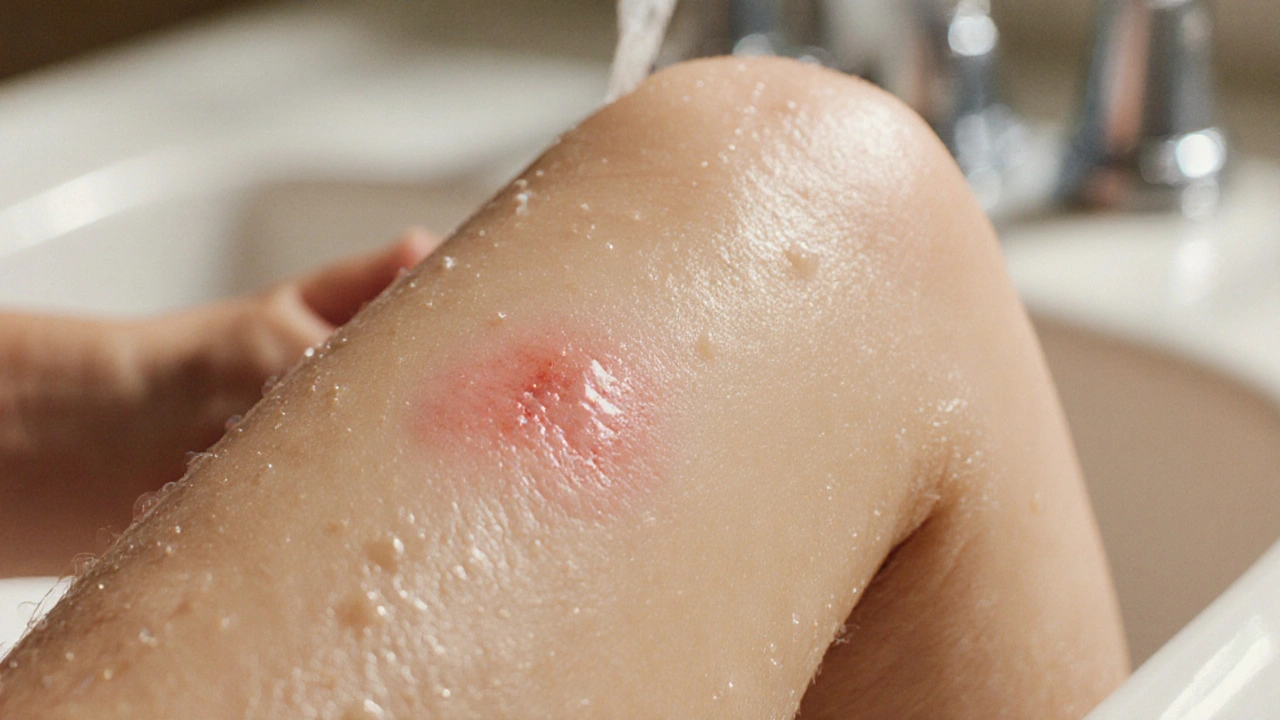Treat Infected Abrasion: What You Need to Know
If you’ve scraped your skin and it’s gotten red, swollen, or painful, you’re probably dealing with an infected abrasion. It can feel scary, but most infections are easy to handle at home if you act fast. Below are the basics you need to clean the wound, keep it from getting worse, and know when to call a doctor.
Spotting infection early
First thing is to watch for warning signs. A healthy scrape will be pinkish and might ooze a little clear fluid. An infection shows up as bright red or purple edges, increasing pain, heat around the area, pus, or a foul smell. Fever or feeling generally sick also means the bug might be spreading.
When you notice any of these clues, start treating the wound right away. The sooner you reduce bacterial growth, the less likely you’ll need antibiotics or a doctor’s visit.
Cleaning and caring for the wound
Grab clean water, mild soap, and a soft cloth. Gently rinse the abrasion to remove dirt and debris—no scrubbing, just a light wash. Pat dry with a clean towel; don’t rub, because friction can damage new tissue.
Next, apply an over‑the‑counter antibiotic ointment like bacitracin, neomycin, or polysporin. A thin layer is enough; too much can trap moisture and slow healing. Cover the abrasion with a sterile non‑stick pad or a breathable bandage. Change the dressing daily or whenever it gets wet or dirty.
If the wound is large or you can’t keep it clean, consider a larger gauze dressing and secure it with medical tape. Keep the area elevated if it’s on a leg or arm to reduce swelling.
Watch the wound each day. Once the redness starts shrinking and the pain lessens, you can slowly stop using the ointment and let the skin breathe. It’s normal for a scab to form—don’t pick at it, as that opens a new path for bacteria.
When to see a doctor
Most infected abrasions improve within a few days of home care. Seek professional help if you see any of these red flags: the infection spreads beyond the original spot, you develop a fever over 100.4 °F (38 °C), swelling gets worse, or you notice streaks of red spreading outward.
People with diabetes, weak immune systems, or poor circulation should get medical advice early, even if the infection looks mild. A doctor may prescribe oral antibiotics or recommend a different dressing to speed recovery.In a pinch, you can also call a tele‑health service for quick guidance. They can tell you whether a prescription is needed and where to pick it up safely.
Bottom line: clean the abrasion, use a thin layer of antibiotic ointment, keep it covered, and watch for signs of worsening infection. Follow these steps and most abrasions will heal without a trip to the clinic.
Infection in Abrasions: Essential Facts and Care
Learn how infections develop in abrasions, spot warning signs, prevent bacterial growth, and treat infected scrapes effectively.
